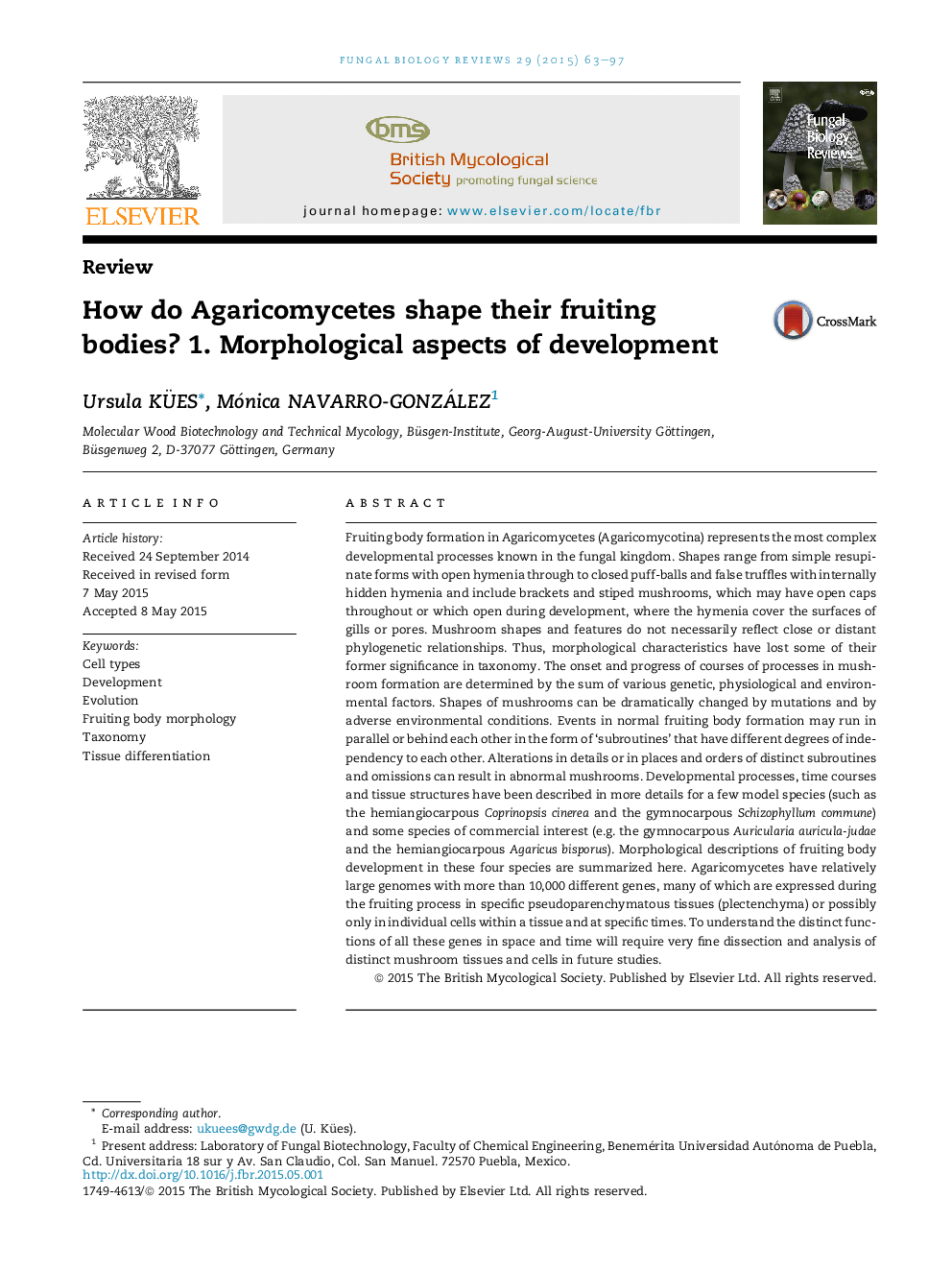| Article ID | Journal | Published Year | Pages | File Type |
|---|---|---|---|---|
| 2180456 | Fungal Biology Reviews | 2015 | 35 Pages |
•Morphological aspects of fruiting bodies and their development in Agaricomycetes and other Basidiomycetes are discussed.•Taxonomic and evolutionary perspectives are presented.•Genetic, physiological and environmental factors effecting morphological plasticity are addressed.•Fruiting in Auricularia, Agaricus, Coprinopsis and Schizophyllum is described in detail.•Estimates are provided for the numbers of different cell types involved with fruiting body development.
Fruiting body formation in Agaricomycetes (Agaricomycotina) represents the most complex developmental processes known in the fungal kingdom. Shapes range from simple resupinate forms with open hymenia through to closed puff-balls and false truffles with internally hidden hymenia and include brackets and stiped mushrooms, which may have open caps throughout or which open during development, where the hymenia cover the surfaces of gills or pores. Mushroom shapes and features do not necessarily reflect close or distant phylogenetic relationships. Thus, morphological characteristics have lost some of their former significance in taxonomy. The onset and progress of courses of processes in mushroom formation are determined by the sum of various genetic, physiological and environmental factors. Shapes of mushrooms can be dramatically changed by mutations and by adverse environmental conditions. Events in normal fruiting body formation may run in parallel or behind each other in the form of ‘subroutines’ that have different degrees of independency to each other. Alterations in details or in places and orders of distinct subroutines and omissions can result in abnormal mushrooms. Developmental processes, time courses and tissue structures have been described in more details for a few model species (such as the hemiangiocarpous Coprinopsis cinerea and the gymnocarpous Schizophyllum commune) and some species of commercial interest (e.g. the gymnocarpous Auricularia auricula-judae and the hemiangiocarpous Agaricus bisporus). Morphological descriptions of fruiting body development in these four species are summarized here. Agaricomycetes have relatively large genomes with more than 10,000 different genes, many of which are expressed during the fruiting process in specific pseudoparenchymatous tissues (plectenchyma) or possibly only in individual cells within a tissue and at specific times. To understand the distinct functions of all these genes in space and time will require very fine dissection and analysis of distinct mushroom tissues and cells in future studies.
Graphical abstractFigure optionsDownload full-size imageDownload high-quality image (301 K)Download as PowerPoint slide
